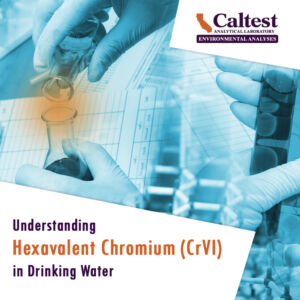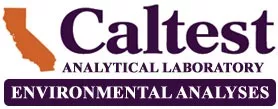 Chromium is a naturally occurring heavy metal found throughout the environment.
Chromium is a naturally occurring heavy metal found throughout the environment.
This tasteless and odorless metal occurs in various forms with the most common being trivalent chromium (CrIII) and hexavalent chromium (CrVI).
Hexavalent chromium (CrVI) occurs naturally through the erosion of chromium deposits and is also generated through industrial activities/manufacturing processes and is commonly found in many everyday items (i.e., stainless steel, chrome plating, paints, leather, and wood preservatives). Discharge from these processes can potentially infiltrate surrounding water supplies.
Hexavalent chromium is a known carcinogen with prolonged exposure leading to adverse health effects.
Hexavalent chromium (CrVI) regulation in drinking water
While Hexavalent chromium (CrVI) is not currently regulated by the Environmental Protection Agency (EPA), the State of California utilizes the total chromium state Maximum Contaminant Level (MCL) of 50 parts per billion (ppb). This MCL was established in 1977 for both hexavalent chromium (CrVI) and the less toxic trivalent form (CrIII). California State Water Board has proposed an MCL of 10 ppb with water systems complying with a specific timeline based on the number of service connections within the system. The proposed MCL is likely to be adopted by June 2024.
Testing for hexavalent chromium (CrVI) in drinking water

Analyzing drinking water samples for hexavalent chromium (CrVI) is conducted by accredited laboratories using EPA method 218.6 or 218.7. Both methods utilize ion chromatography, while EPA 218.7 includes post-column derivation and UV-visible spectroscopic detection allowing for . Alternatively, and if unregulated, a less expensive option is to analyze for Total Chromium, using EPA 200.8, with a Reporting Limit (RL) as low as 1 ppb. Sample locations with results greater than this level, can then be resampled and analyzed for hexavalent chromium.
If you would like information regarding testing, including cost per sample, turnaround time, and container and volume requirements, please contact us at info@CaltestLabs.com .
Additional information regarding CrVI can be found on the State of California Waterboards website.
